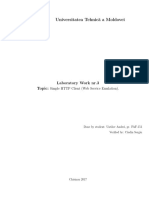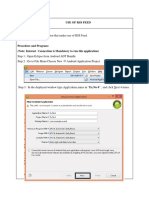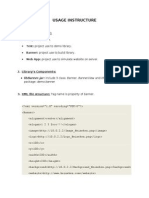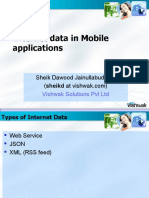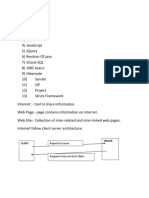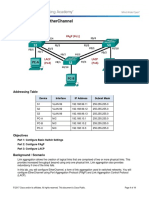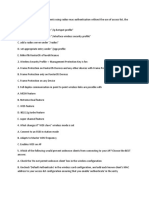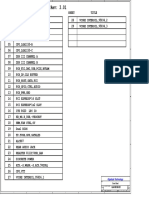Android Web Connectivity
Web Connectivity
Web
Resource Formats
A global collection of useful resources
Client-server architecture connecting users (through agents) with webservers over the internet using standard protocols
Basic Protocol : HTTP
Web services support information exchange with other applications
Native mobile application acts as a client / agent and responsible for
interpreting / parsing the resource
HTML, XML, JSON, Image, etc
Java / Android API
URL
HttpURLConnection
�HTTP Protocol
A simple message-based protocol
Message Types
Request
represents client request to access a resource (identified by URI)
Different request methods supported (e.g. GET, POST, etc)
Response
Represents server response capturing resource representation in one of the supported formats
Example request
Example response
GET http://www.google.com HTTP/1.1
Host: www.google.com
HTTP/1.1 200
Content-type: text/html
Content-length: xx
<html>
<head> </head>
<body> Google </body>
</html>
�1. Open connection
with web resource
try{
URL url = new URL("../resource");
HttpURLConnection connection = (HttpURLConnection) url.openConnection();
connection.setReadTimeout(10000);
connection.setConnectTimeout(15000);
connection.setRequestMethod("GET");
connection.setDoInput(true);
connection.connect();
StringBuilder content = new StringBuilder();
BufferedReader reader = new BufferedReader(
new InputStreamReader( connection.getInputStream() ) );
while( (line = reader.readLine()) != null ){
content.append(line);
}
line = content.toString();
parse(line);
} catch(Exception ex) {
ex.printStackTrace();
}
3. Parse
2. Download resource
as a stream
�Example: XML resource
<pictures>
<category name="Architecture" count="3">
<im title=... url=... description=... />
<im title=... url=... description=... />
<im title=... url=... description=... />
</category>
<category name="Art" count="3">
<im title=... url=... description=... />
<im title=... url=... description=... />
<im title=... url=... description=... />
</category>
</pictures>
�XML Parsing
DOM
Serial
Tree-based
Parses entire XML document and provides a tree-based representation of elements
in form of a DOM
Easy-to-use
Memory intensive as well as slow
Event-based
Parses entire XML document and generates events when a specific XML construct
encountered
Requires customized code for handling events
Efficient with low memory footprint
Pull
A good compromise between DOM and Serial parsing
Underlying implementation based upon Serial parsing
�XML DOM
�XML Pull Parsing
Simple Event Model
START_DOCUMENT
START_TAG
TEXT
END_TAG
END_DOCUMENT
Recursive descent parsing
Instead of parsing and managing entire document
Parse only the portion interested in and skip the rest
�pictures = new ArrayList<Picture>();
try{
XmlPullParser parser = Xml.newPullParser();
parser.setInput(new StringReader(xml));
int event = parser.getEventType();
while(event != XmlPullParser.END_DOCUMENT){
if(event == XmlPullParser.START_TAG &&
parser.getName().equals("category") ) {
category = parser.getAttributeValue(null,"name");
}
if(event == XmlPullParser.START_TAG &&
parser.getName().equals("im") ){
String url = parser.getAttributeValue(null,"url");
String description = parser.getAttributeValue(null,"description");
pictures.add(new Picture(url,description,category));
}
event = parser.next();
}
} catch(Exception ex){ }
�Best practices
Download resources in a separate thread, AsyncTask
Check for connectivity changes
Adapt according to network state
Use of broadcast receivers and connectivity manager
Cache data
Wi-fi
Mobile radio
No connection
Cache size
Synchronization frequency
Strategies
Preferences
Allow user to specify connectivity and cache preferences



